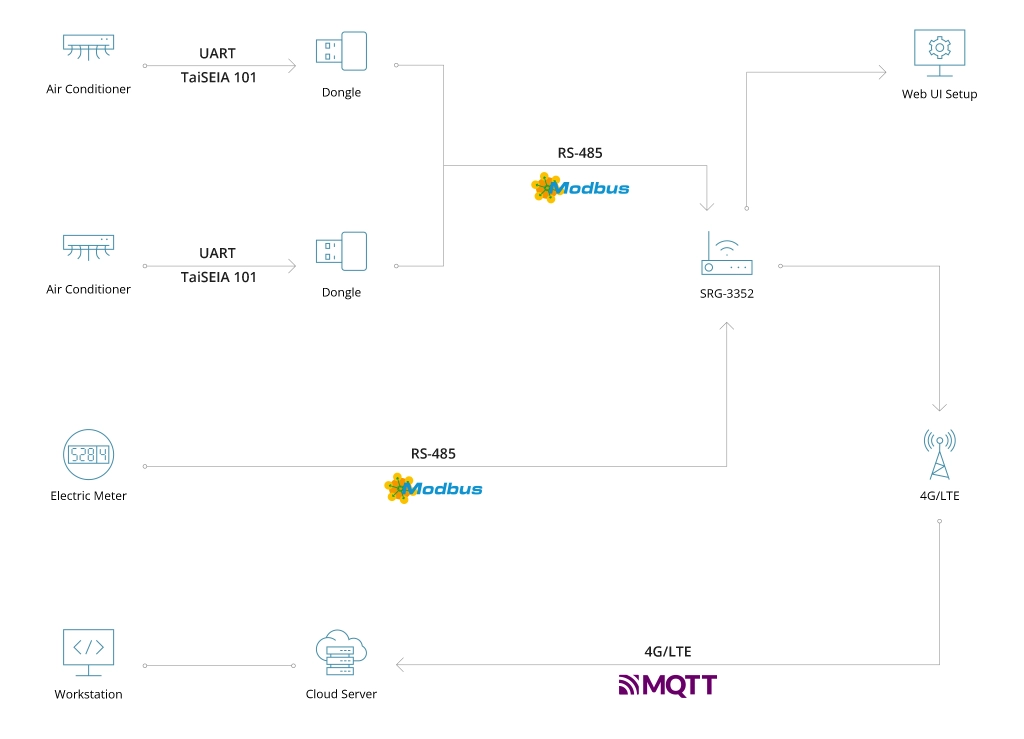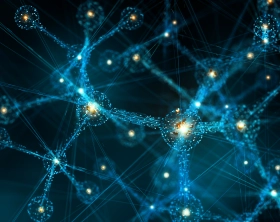IoT Energy Management: Benefits, Use Cases, and Challenges
The Benefits of IoT Energy Management Solutions
IoT devices provide an extra pane of visibility into energy consumption and generation. Real-time sensor data helps asset owners evaluate usage patterns, reduce waste, and optimize efficiencies, leading to the following benefits:
- Improved energy monitoring. Affordable sensors offer better insights into energy use across various systems and devices (HVAC, lighting, production equipment), providing facilities with consumption patterns and demand rates. Operators can benefit from granular data on grid performance (e.g., load levels, efficiency metrics) and power quality output (e.g., voltage levels, frequency) to maintain higher system efficiency.
- Automated energy management allows real-time monitoring and data analytics to control energy usage and locate waste reduction opportunities. For example, sensors collect real-time data on lighting conditions, facility occupancy rates, and adjust lighting levels in unoccupied rooms.
- Better asset management. IoT devices enable predictive maintenance of energy assets, providing richer diagnostic data on asset performance (e.g., vibration analysis, and temperature changes). Early anomaly detection improves servicing schedules, minimizes downtime, and extends asset lifespan.
- Regulatory compliance. Sensors capture emission and energy usage levels for disclosures. The data automates compliance checks and ensures the steady progress in reducing carbon footprint.
Energy Management Using IoT: 4 Key Use Cases
IoT technology has already proven its mettle in the agriculture, manufacturing, and telecom sectors. The energy market appears to be the next frontier, with the four scenarios already being a reality.
Real-Time Data Collection
Energy management IoT solutions provide real-time data collection. Sensors can monitor assets, from HVAC equipment to solar panel installations, to understand energy usage, consumption trends, and anomalies in performance.
The obtained data can then be streamed to a centralized energy management system (EMS) and aggregated for analytics. This process streamlines energy monitoring, resource usage, and carbon footprint management.
The Edison Foundation Institute for Electric Innovation estimates that by the end of 2025 over 135 million smart meters will be installed across the US. Smart meters, embedded in the energy supply chain (e.g., power generation plants, transmission lines, and consumer endpoints), can provide utility businesses with live data on energy consumption patterns, enabling the optimization of grind planning and management. For example, obtain more accurate demand forecasts using predictive analytics to estimate energy consumption during hot spells in summer and then schedule extra power generation to match the predicted demand.
Similarly, data from IoT devices can help detect anomalies in power generation, indicative of equipment wear and tear, and quickly initiate maintenance. For example, a change in vibration patterns in a transformer may suggest a malfunction issue. A combination of data from IoT devices and predictive analytics can not only predict the imminent breakdown but also provide accurate data on equipment or service degradation over a tracked period, allowing operators to schedule just-in-time maintenance. Shell, for example, has extended its AI-powered predictive maintenance over 10,000 pieces of equipment at upstream, manufacturing, and integrated gas assets globally. The oil & gas company has full visibility into valves, compressors, pumps, and other critical equipment, helping the teams avoid costly unplanned downtime, production interruptions, accidental emissions, and potentially dangerous equipment failures.
Energy Optimization in Facility Management
With energy prices going up, facility managers are looking for every opportunity to eliminate resource waste and excessive emissions. IoT energy management solutions help optimize energy consumption levels by level-setting the demand with equipment usage. For example, HVAC runtimes can be programmed, based on real-time facility occupancy or tuned with the weather changes.
A telecom company in Taiwan installed an IoT energy management system across its retail locations to dynamically adjust air conditioning based on store occupancy rates. In-store devices perform people counts in each store and send data to the central monitoring system, where the team can automatically adjust the controls to ensure optimal HVAC system usage.
IoT solutions are also proving to bring extra optimizations in more complex industrial scenarios such as mine ventilation. Ventilation can account for up to 50% of an underground mine's energy costs. To optimize energy uses, leading mining companies are deploying ventilation-on-demand (VoD) systems. A VoD system uses sensor technology to detect the presence of humans and equipment in different tunnels and automatically switches off ventilation in areas where no work is being done. Implemented in the Córrego do Sítio gold mine in Brazil, a VoD system generated an economy of 53% in relation to the available operating power for the main ventilation system and a 21% saving for the auxiliary ventilation.
Digital Twins of Energy-Generating Assets
A vast network of IoT devices can be used to create a digital twin of an entire asset — a commercial facility or even an entire power production plant. By connecting real-time data from multiple sources, you can create a realistic, data-backed replica of your facility to remotely monitor and optimize its performance in real-time.
Effectively, a digital twin allows operators to interact with various plant processes and systems in a digital environment, without causing disruption to the live process. For example, estimate the energy output scenarios under different weather conditions or evaluate the impacts of planned equipment maintenance on production capacities.
Tietoevry has developed a Distribution Energy Solution (DES) — a cloud-based suite for automatic management and control of grid-connected devices. The platform helps energy companies run advanced analyses, dynamically manage operations, and even unlock new revenue streams.
St1 Lähienergia, an energy company from the Nordics, used DES to create a Virtual Power Plant for managing distributed energy production from renewable and weather condition-reliant energy sources. The system connects equipment at Lähienergia’s heat stations with IoT for more effective capacity aggregation and communications with the Transmission System Operator (TSO). As a result, St1 Lähienergia can take part in the reserve market and create new income streams, while also supporting the sustainable operation of the national electricity grid.
Infopulse team, in turn, helped a German oil and gas company create a digital twin platform for monitoring gas turbines. The company already had over 250+ IoT sensors placed on its equipment but struggled to obtain high-fidelity data on the turbine’s abnormal behavior. Our team helped deploy a user-friendly, automated solution for anomaly detection. Trained on the historical dataset, the machine learning model detects performance anomalies with a 93% accuracy rate. The system also automatically visualizes all the reported findings, allowing business users to easily perform root cause analysis and plan the necessary interventions.
Home Energy Management Solutions
Last, but not least, IoT energy management solutions can help transform how consumers interact with energy systems and manage their energy use. Smart thermostats, meters, lighting, and monitor/control plug loads empower consumers to make better informed decisions about their energy use and achieve greater energy efficiency.
Companies like OVO Energy, Octopus Energy, and E.ON among others are bringing new home energy management systems to the market that allow consumers to get personalized insights, optimize energy costs, and reduce their CO2 emissions. For example, E.ON gives consumers access to solar panels and smart meter installations, as well as 100% renewable electricity purchases and usage monitoring through a smart home app. OVO provides all of the above, plus the ability to easily trade surplus energy, produced at home.
As energy production becomes more decentralized, IoT devices will start playing a more important role in the localized management of energy resources and peer-to-peer energy trades.
Challenges of IoT in Energy Management
While IoT introduces substantial improvements to the energy management process, the adoption also brings several major challenges:
- Connectivity issues. IoT data transmission requires low latency, which can be hard to achieve in areas with 4G/5G coverage holes. Large-scale IoT device deployments can generate network congestion and delays in transmission. Edge data processing, as well as investments in 5G, can help address these problems.
- Privacy and data security. Just like any other technology, IoT devices must be included in the corporate security perimeter and properly protected against common threats like malware and ransomware, DDoS attacks, and hijacking. Likewise, proper security measures must be in place to ensure secure and private data transmissions, namely data encryption, strong authentication, and proper firmware security.
- Integration complexity. By design, some legacy energy management systems cannot effectively exchange data with IoT devices without upgrades. The great variety of IoT device types and standards also creates interoperability challenges even with newer technologies. Careful IoT network planning, device evaluation, and EMS system re-engineering may be required to support advanced scenarios.
- Scalability. As networks expand and data traffic increases, IoT device management becomes more complicated. To ensure high system availability and scalability, you will need to invest in a proper software stack for data collection, remote device management, and continuous security monitoring.
Conclusion
The energy market already has well-established mathematical models for effective resource management. IoT technologies bring extra depth and variety of data for analysis, allowing operators to better understand the impacts of different actions on supply and demand patterns. When combined with machine learning, IoT energy management solutions also enable faster and more accurate cross-correlation, helping teams uncover new trends and savings opportunities.
![IoT Energy Management Solutions [banner]](https://www.infopulse.com/uploads/media/banner-1920x528-iot-energy-management-benefits-use-сases-and-сhallenges.webp)



![CX with Virtual Assistants in Telecom [thumbnail]](/uploads/media/280x222-how-to-improve-cx-in-telecom-with-virtual-assistants.webp)
![Generative AI and Power BI [thumbnail]](/uploads/media/thumbnail-280x222-generative-AI-and-Power-BI-a-powerful.webp)
![AI for Risk Assessment in Insurance [thumbnail]](/uploads/media/aI-enabled-risk-assessment_280x222.webp)
![Super Apps Review [thumbnail]](/uploads/media/thumbnail-280x222-introducing-Super-App-a-Better-Approach-to-All-in-One-Experience.webp)
![5G Network Holes [Thumbnail]](/uploads/media/280x222-how-to-detect-and-predict-5g-network-coverage-holes.webp)

![How to Reduce Churn in Telecom [thumbnail]](/uploads/media/thumbnail-280x222-how-to-reduce-churn-in-telecom-6-practical-strategies-for-telco-managers.webp)
![Automated Machine Data Collection for Manufacturing [Thumbnail]](/uploads/media/thumbnail-280x222-how-to-set-up-automated-machine-data-collection-for-manufacturing.webp)
![Money20/20 Key Points [thumbnail]](/uploads/media/thumbnail-280x222-humanizing-the-fintech-industry-money-20-20-takeaways.webp)
